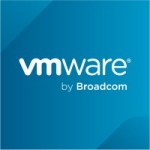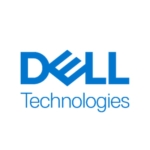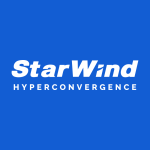What is our primary use case?
The product is being utilized within an airgap lab environment, which means it is isolated from external networks and internet connectivity for security reasons. The virtual Storage Area Network (SAN) is integrated into the system alongside Hyper-V, a virtualization platform developed by Microsoft.
This configuration allows for efficient storage management and virtualization capabilities within the isolated environment of the lab. The virtual SAN helps in providing centralized storage resources that can be dynamically allocated to virtual machines running on the Hyper-V infrastructure, enhancing the overall performance and flexibility of the system.
By combining these technologies, users can optimize their lab environment for testing, development, or research purposes without compromising security or network integrity.
How has it helped my organization?
This innovative product has significantly enhanced speed, security, and organization. With its advanced features and capabilities, users can experience improved efficiency and productivity.
The optimization of speed ensures rapid performance, allowing tasks to be completed more quickly and effectively. Additionally, the enhanced security measures provide peace of mind and safeguard sensitive information from potential threats.
Furthermore, the organization features streamlined processes and ensures easy access to important data, ultimately contributing to a more seamless and structured workflow.
This product has proven to be a valuable asset in enhancing overall operations and effectiveness.
What is most valuable?
When it comes to ease of installation, the whole process is designed to be user-friendly and straightforward. With simple step-by-step instructions and all the necessary tools included in the package, setting up the product is a breeze. Even for those who are not particularly tech-savvy, the installation can be completed in a matter of minutes without any hassle. Whether it's assembling a piece of furniture, installing software, or setting up a new device, the ease of installation ensures a smooth and hassle-free experience for users.
What needs improvement?
The dashboard is functional, but it could benefit from a more modern and visually appealing design. A facelift would not only enhance the overall aesthetics but also improve user experience by making it more intuitive and user-friendly.
Updates such as streamlined navigation, clearer data visualization, and customizable widgets could make the dashboard more engaging and efficient for users.
A fresh look and improved functionality would elevate the dashboard to better meet the needs and expectations of users.
For how long have I used the solution?
I've used the solution for six months.
What do I think about the stability of the solution?
One of the standout features of the device is its exceptional stability when used for virtual SANS (Storage Area Network). The stability ensures that data transfer and storage operations are smooth and uninterrupted, making it a reliable and efficient solution for managing and accessing large volumes of data in a network environment.
This feature enhances the overall performance and reliability of the virtual SANS, making it a valuable asset for businesses and organizations that rely on secure and high-speed data storage solutions.
What do I think about the scalability of the solution?
One of the best features of the product is its scalability. This allows users to easily customize and adjust the product to suit their specific needs and preferences.
Whether it's expanding storage capacity, upgrading performance capabilities, or adapting to different user requirements, the scalability of the product ensures versatility and flexibility.
Additionally, scalability often means that the product can grow with the user, accommodating changing needs over time without the need for a complete overhaul or replacement. This feature adds significant value to the product by enhancing its longevity and adaptability in various scenarios.
How are customer service and support?
Their support team is highly knowledgeable and skilled in assisting customers with any technical issues they may encounter.
Whether it's troubleshooting a complex setup, optimizing performance, or addressing compatibility concerns, the StarWind customer service team is well-equipped to provide expert guidance and solutions.
Customers can rely on their technical expertise to ensure smooth implementation and operation of the Virtual SAN solution.
How would you rate customer service and support?
Which solution did I use previously and why did I switch?
I did not previously use a different solution.
How was the initial setup?
The installation of StarWind Virtual SAN was straightforward and seamless. The user-friendly interface guided me through the process step by step, making it easy to set up and configure.
I was impressed by the clear instructions and the minimal technical knowledge required to get the software up and running. The whole installation process was efficient and well-organized, allowing me to quickly deploy the virtual SAN solution without any hassle.
My experience with installing StarWind Virtual SAN was smooth and hassle-free.
What about the implementation team?
We used an in-house team.
What was our ROI?
We witnessed an ROI within one to three months.
Which other solutions did I evaluate?
I did not evaluate other options.
Which deployment model are you using for this solution?
On-premises
Disclosure: My company does not have a business relationship with this vendor other than being a customer.


















